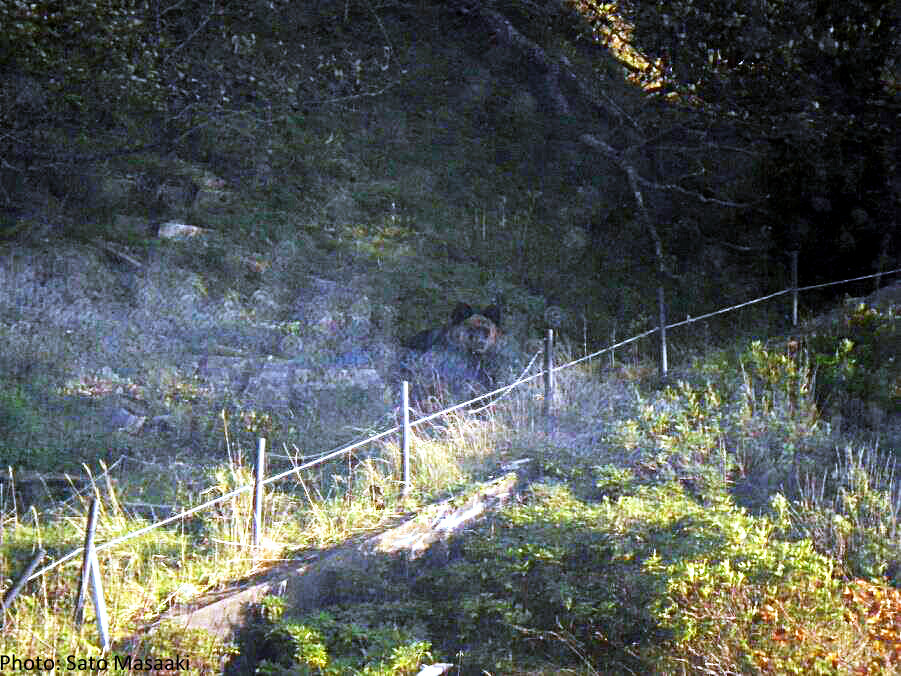Friday morning. Just a normal working day. I reached the laboratory around 8 o´clock in the morning, expecting nothing else but my worms and mussels to be taken care of. However, as I get closer I saw two lab members staying in front of the building and calling out my name. They were excited and nervous and told me what happened: a bear appeared. Only some weeks ago, there was already the rumour that somebody saw a bear maybe 2 km away from our laboratory. On Friday, it was not 2 km away anymore: It was seen just on top of the hill not far from one of the staff houses of the marine station. Ursus arctos yezoensis is the Latin name of the species that inhabits Hokkaido and the population size is estimated as 3000-6000 individuals. Half of them can be found in the eastern part of the Island where the Akkeshi Marine Station is located. So, it was only a question of time until we would face one of them. They can reach a size of 2.3m when standing upright and can get as heavy as 250 kg. It is the largest species of land-living mammal in Japan and it is one of the biggest bears in the world. Every year, around 2 people get killed in a bear attack in Hokkaido, so it is now on the list of “harmful” animals. However, Japan’s authorities tolerate the bear. Since the overall population size is declining, it was decided that the species has to be protected because the bear is part of the culture and history of Japan. The Ainu, the indigenous ethnic group on Hokkaido, see the bear as a god in the shape of an animal and they even had a bear festival called Lomante. The ceremony is known as “sending of the bear” (kumaokori). In winter when bears are in their hibernation the Ainu used to catch a young bear and feed it within the village. Then the “Iomante” was held, what basically means killing the bear and eating it. Feeding the bear was considered as serving and pleasing the god, while eating its meat in the end was seen as a repayment and as a gift from the god. It was now the second time in the 60 years long history of the Akkeshi Marine Station that a bear has shown up so close, while the first time was in 2012. Maybe two hours after the news was out, we got a phone call from Hokkaido University. For safety reasons, we were asked to leave the laboratory and our dormitory immediately. We therefore stopped our experiments and moved to the city center of Akkeshi that is some kilometres away. Here we will stay until the bear decides to leave for another place. However, nobody knows how long this will take…
Here is an update from Monday: It is not only one bear! It is a mother with its young one. And there was even a second sighting of a bear that probably was not the same individual because there was no young bear with it. So, we may have even three of them around.
Last update from Tuesday: We are back in the lab. However, everybody is still a bit worried, because it is not clear where the bears went to.
By Myriam Perschke, Team Japan

